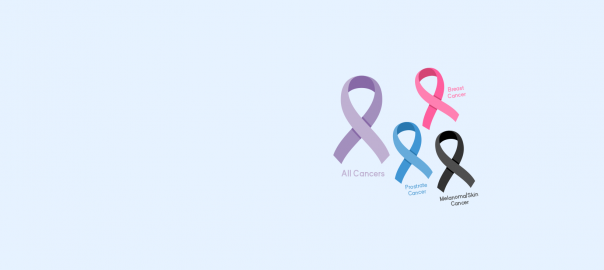On
World Cancer Day on 4 February, we reflect on the many lives lost and the families shattered by cancer.
In 2020 150,000 new cases of cancer were diagnosed and there were just under 50,000 deaths caused by cancer. As a comparison, 50 times as many people died from cancer last year than COVID-19.
World Cancer Day is also a day of hope and action. Hope in knowing survival rates have improved over recent years with earlier detection and better medical treatment. Action in knowing we can do something about it.
In Australia, one-third of deaths from cancer are due to preventable risk factors. There are seven steps you can take to help reduce the risk of cancer:
• Quit smoking
• Eat less processed meat
• Follow a healthy balanced diet
• Maintain a healthy weight
• Be sun safe
• Limit alcohol intake
• Be active
• See a GP for appropriate health checks and cancer screening
The theme for
World Cancer Day is
‘I Am and I Will’. I Am … aware of what to look for and …
I Will take the appropriate action. Together, we can reduce the impact of cancer on ourselves and the people we love.
While the three most common causes of cancer death in Australia were lung, colorectal and pancreatic cancer, the three most diagnosed cancers in 2020 were
breast cancer, prostate cancer and
melanoma of the skin. It is important we know what the common symptoms are and what we need to do.
Breast cancer symptoms include a:
• new lump or lumpiness, especially if it’s only in one breast
• change in the size or shape of the breast
• change to the nipple, such as crusting, ulcer, redness or inversion
• nipple discharge that occurs without squeezing
• change in the skin of the breast such as redness or dimpling
• pain that doesn’t go away.
Prostate cancer symptoms include:
• problems urinating, including weak flow, a flow that stops and starts, needing to urinate urgently or frequently, difficulty starting the flow of urine, or feeling like you haven’t completely emptied your bladder
• pain or burning when urinating
• blood in the urine or semen
• pain in the back, hips, pelvis or chest
• weak or numb legs or feet
• tiredness, shortness of breath, dizziness, fast heartbeat or pale skin.
Melanoma of the skin symptoms include:
• a new spot on the skin, or a spot that is changing in size, shape or colour
• moles that have features of the ABCDE rule:
o asymmetry: the 2 sides of the mole do not match
o border irregularity: the mole has irregular edges
o colour: the mole is not the same colour throughout
o diameter: the mole is wider than about 6 mm (although some melanomas are smaller than this)
o evolving: the mole has changed in size, shape, colour or texture during the past few weeks or months
• a sore that does not heal
• itching, scaling, bleeding, oozing, swelling or pain in a mole
• spread of pigment from a spot into the surrounding skin.
If you have any symptoms…
Visit your GP as soon as possible to discuss your symptoms.
Many conditions (not just cancer) can cause these symptoms and your GP can help with the correct diagnosis.
The information above is provided for general information only and should not be relied upon as medical advice. If you would like medical advice, please seek specific advice tailored to your circumstances from a medical practitioner.
1. Cancer Australia, Cancer in Australian Statistics (2021) https://www.canceraustralia.gov.au/affected-cancer/what-cancer/cancer-australia-statistics; Australian Institute of Health and Welfare, Cancer Data in Australia (2020) https://www.aihw.gov.au/reports/cancer/cancer-data-in-australia/contents/cancer-rankings-data-visualisation.
2. Australian Department of Health, Coronavirus (COVID-19) Current Situation and Case Numbers (2021) https://www.health.gov.au/news/health-alerts/novel-coronavirus-2019-ncov-health-alert/coronavirus-covid-19-current-situation-and-case-numbers#cases-and-deaths-by-age-and-sex.
3. Cancer Australia, Cancer in Australian Statistics (2021) https://www.canceraustralia.gov.au/affected-cancer/what-cancer/cancer-australia-statistics.
4. Australian Institute of Health and Welfare, Cancer Data in Australia (2020) https://www.aihw.gov.au/reports/cancer/cancer-data-in-australia/contents/cancer-rankings-data-visualisation.
5. Cancer Australia, What are the Symptoms of Breast Cancer? (2020) https://www.canceraustralia.gov.au/affected-cancer/cancer-types/breast-cancer/what-are-symptoms-breast-cancer.
6. Cancer Australia, What are the Symptoms of Prostate Cancer? (2020) https://www.canceraustralia.gov.au/affected-cancer/cancer-types/prostate-cancer/what-are-symptoms-prostate-cancer.
7. Cancer Australia, What are the Symptoms of Melanoma (2020) https://www.canceraustralia.gov.au/affected-cancer/cancer-types/melanoma/what-are-symptoms-melanoma.
